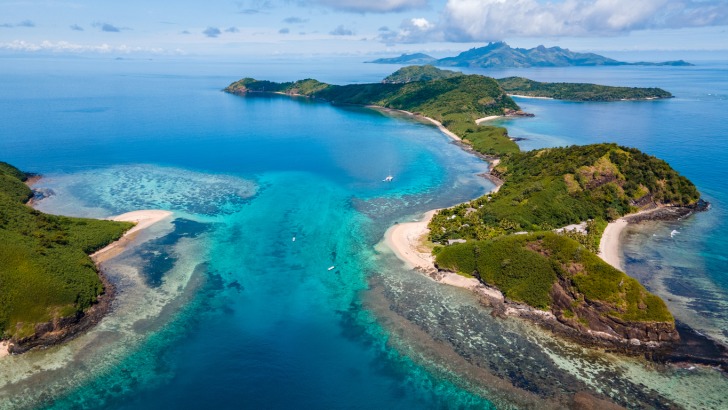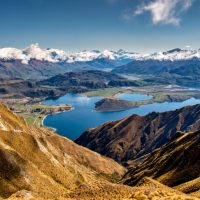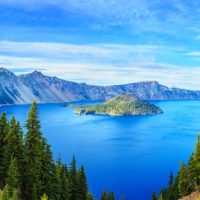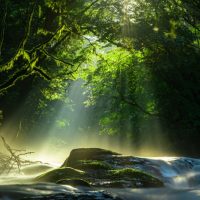Fiji is a country located in the South Pacific Ocean.
Fiji has nearly 390 coral species and is perfect for those looking to scuba dive and snorkel in the clearest of waters.
But besides the obvious, Fiji is also home to several snake species—three, to be exact.
Out of the three, two are venomous.
Thankfully, they aren’t a threat to humans.
This guide will provide you with detailed information regarding the snake species in Fiji and how to stay safe while exploring the island.
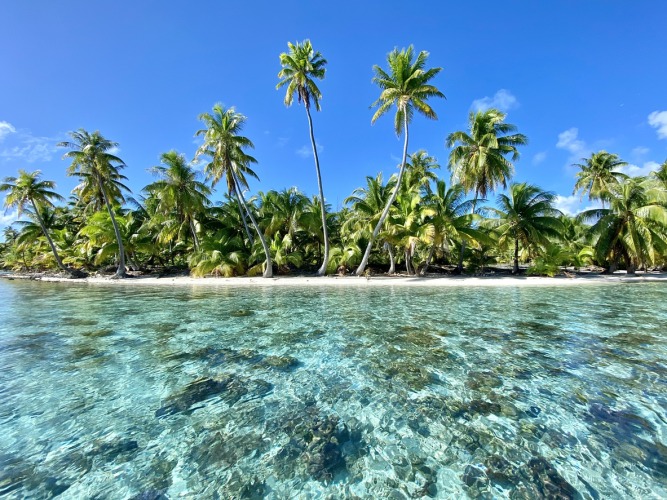
Contents
So, Are There Snakes in Fiji?
Yes, there are snakes in Fiji.
However, seeing them is often rare.
Fiji is home to both sea snakes and land snakes, both of which pose no threat to humans.
The most common snake in Fiji is known as the Pacific Boa.
The bolo snake, also known as the Fiji snake, is the only type of land snake on the island that is venomous.
The last type of snake that is found in Fiji is the yellow-lipped sea krait snake.
This snake is also considered to be venomous.
Snake Species in Fiji
Here is a list of all the snake species in Fiji:
Pacific Boa Snake
The Pacific boa snake is the most common in Fiji.
It is a much smaller snake and can grow to only 30 cm in length.
It is characterized by having a small head, a short tail, and a smooth body.
They tend to be more on the lighter side and can range from light to mid-brown.
They also have a pale brown belly.
These snakes are not venomous and pose no threat to humans.
Fiji (Bolo) Snake
The bolo snake is a venomous snake that lives in Fiji.
Most adults can reach 16 inches or more in length.
They are also part of the Cobra family.
Their venom is highly potent and can even be paralyzing.
They are characterized as having a pointed nose and small eyes.
They also have slender bodies and short, pointy tails.
They can range in color but are typically light brown.
Younger snakes may have dark bands on their bodies.
Yellow-lipped Sea Krait Snake
The yellow-lipped sea krait snake is also referred to as the banded sea krait snake.
They are also venomous, but they can only be found in the Pacific Ocean.
The majority of their time is spent underwater hunting.
Their venom is also potent.
They have a yellow upper lip, hence their names, and mainly blackheads.
They also have a yellow band over their eyes and a yellow nose.
They typically measure 150 cm in length.
Is it Safe to Go on a Trek in Fiji?
Hiking in Fiji is extremely safe overall.
There aren’t many dangerous spiders, snakes, and other types of wildlife that you’ll find on the trails.
The biggest pest in Fiji is mosquitoes.
Hiking trails in Fiji are visited quite often by travelers.
They are, however, rustic.
It’s also normal to encounter muddy conditions following rain.
This means that you should prepare yourself by wearing the necessary shoes and pants.
Don’t forget to bring sunscreen and water.
For the most part, you’ll have an unforgettable experience.
You also have the option of hiring a guide to help you on your hike.
Some of the best hiking trails in Fiji are:
- Highland Escape with Talanoa Treks
- Mt Batilamu, Koroyanitu National Heritage Park
- Garden of the Sleeping Giant
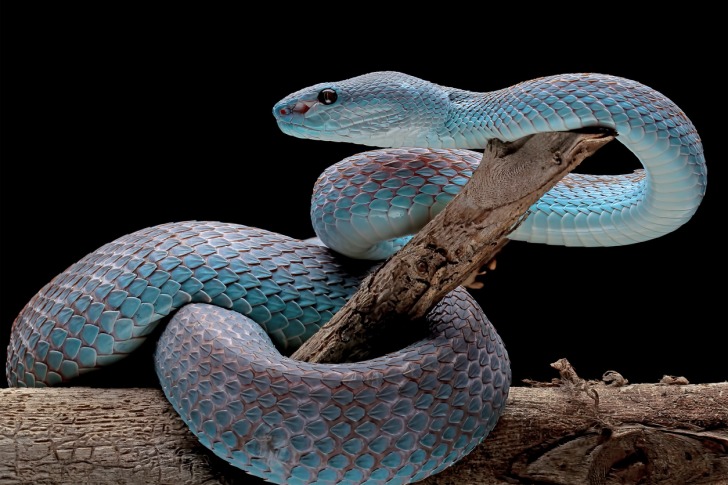
Interesting Snake Facts in Fiji
Fiji has several species of snakes, some of which may be endangered.
However, there are conservation efforts that have been put in place to keep these species protected.
While there are some venomous snakes in Fiji, it’s rare to encounter one, as they are typically only found in isolated areas.
The majority of snakes in Fiji are harmless and critical to the ecosystem on the island.
Snakes in Fiji are mainly found in forests and near rivers and streams.
They can also be found in plantations and gardens.
They are most likely to be seen during the rainy season.
An interesting fact about snakes in Fiji is that the Fiji ground skink-eating snakes eat skinks that can only be found on the ground.
In addition, the Fiji banded iguana snake is only active at night and is found only in trees.
Fortunately, snakes in Fiji aren’t as diverse as many tend to think.
3 Safety Tips for Exploring Nature in Fiji
Here is a list of tips to help you safely explore nature while in Fiji:
- Invest in correct hiking footwear. The terrain can be challenging in Fiji. However, it can also be rewarding. Chances are, you’ll encounter dense rainforests and steep trails. Be sure that you invest in a good pair of waterproof, sturdy boots. The boots should also have a good grip and be able to handle slippery trails.
- Pack light. While out exploring Fiji, you want to make sure that you pack light. Carrying a heavy backpack can cause unnecessary strain. Only pack essentials, including a first-aid kit, snacks, and water.
- Check weather updates. Before heading out, make sure that you check the weather. Fiji tends to have unpredictable tropical weather. Sudden rain showers aren’t uncommon. Just to be on the safe side, you should pack an extra layer of clothing so you can easily adjust as needed.
Summary
Fiji is home to a few snake species, a couple of which are known to be venomous.
The main snake species in Fiji are the Pacific boa, the bolo snake, and the yellow-lipped sea krait snake.
Both the yellow-lipped sea snake and the bolo snake are venomous.
Encounters with snakes in Fiji are rare.
Even if you were to encounter one, they are mostly non-aggressive unless they feel threatened.
In addition, hiking and exploring nature in Fiji are safe.
Fiji has many dangerous wildlife species, including crocodiles and sharks.
However, you won’t have to worry too much about these while hiking.
The biggest annoyance is the mosquitoes in Fiji.
Even still, you should take the necessary precautions and be prepared.
Check the weather before leaving, and pack an extra layer of clothing.
Most of all, never get too close to wildlife.
It’s perfectly fine to enjoy them from a distance.
Fiji Safety Overview
READ THE FULL REPORT: Fiji Safety Review
Safety Index: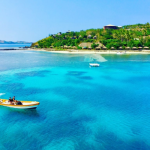
- OVERALL RISK: LOW
- TRANSPORT & TAXIS RISK: LOW
- PICKPOCKETS RISK: LOW
- NATURAL DISASTERS RISK: HIGH
- MUGGING RISK: MEDIUM
- TERRORISM RISK: LOW
- SCAMS RISK: LOW
- WOMEN TRAVELERS RISK: LOW
Frequently Asked Questions
Do sea snakes ever come to shore in Fiji?
Chances are you won’t encounter a sea snake in Fiji, as they typically never come to shore.
Researchers in the past have caught more than 90 yellow-bellied sea snakes before and after rain, but rarely have they seen them come ashore.
What is the heaviest snake ever to be recorded?
The anaconda holds the record for the heaviest snake in the entire world.
They can weigh up to 550 pounds and even reach more than 20 feet in length.
How fast can snakes really move?
Snakes can move fast.
The top speed for the majority of snakes is generally between five and eight miles per hour.
